Networking 102: The OSI Model Breakdown
What Is the OSI Model (Open Systems Interconnection Model)?
The OSI model, short for Open Systems Interconnection Model, is a standardized framework created by the International Organization for Standardization (ISO) in 1984. It was designed to help engineers, developers, and vendors understand, design, and troubleshoot network systems by breaking down the complex process of communication into seven clear, functional layers.
Why was it created? As networks grew more complex, so did the challenge of making systems from different vendors work together. The OSI model provided a common reference point for a universal language for how data moves across a network, regardless of hardware, software, or vendor differences.
If Blog 1 introduced you to what the internet is and how devices communicate using protocols, this blog picks up where that left off: by exploring the internal mechanics behind that communication. The OSI model doesn’t describe specific technologies it describes how they should be structured. Think of it as the blueprint that defines how every network interaction from loading a website to sending a message is logically organized.
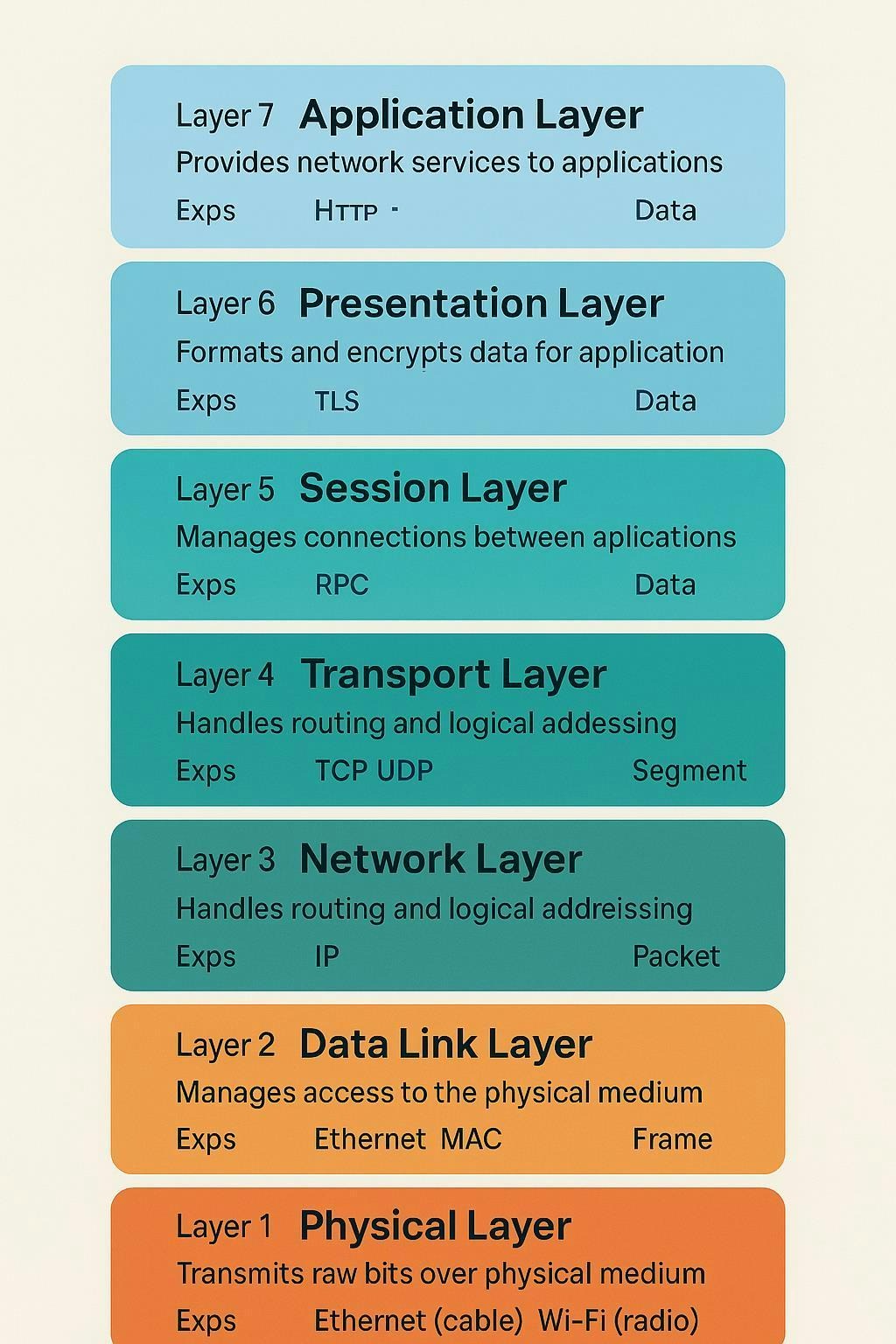
Layer 1: Physical Layer
The Physical Layer is the lowest layer and is responsible for the actual transmission of raw bits over physical media like wires, fiber optics, or radio waves. It converts digital data into electrical, optical, or radio signals.
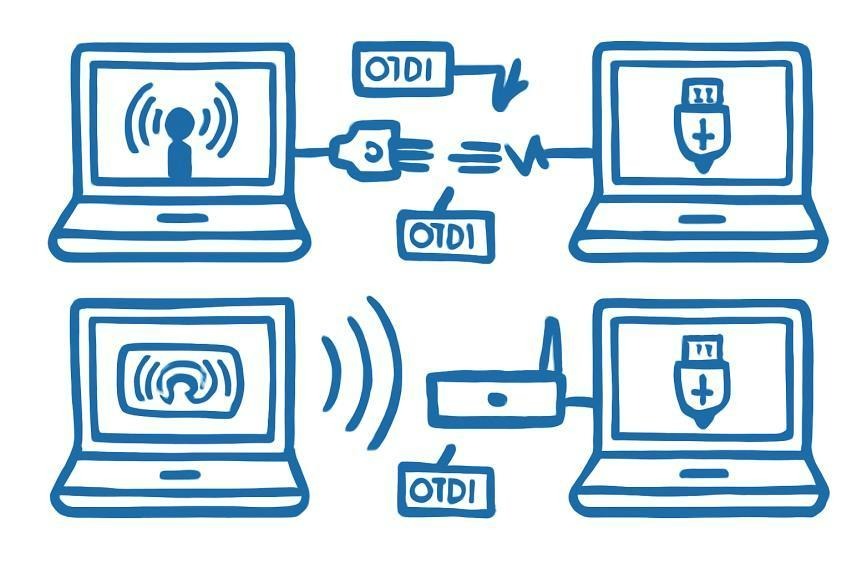
Example Technologies: Ethernet, Wi-Fi, Fiber Optics
Data Unit: Bits
Real-World Application: Transmitting bits over a fiber-optic cable or via wireless RF signals.
Layer 2: Data Link Layer
The Data Link Layer handles communication between two devices on the same physical link. It formats data into frames, applies MAC addressing, performs error detection, and manages flow control to ensure reliable transmission.

Example Protocols: Ethernet, Wi-Fi (IEEE 802.11), ARP, PPP
Data Unit: Frame
Real-World Application: Sending data from a laptop to a router over Wi-Fi.
Layer 3: Network Layer
The Network Layer oversees the delivery of packets between different networks using logical addressing (IP). It decides the best path for data to travel from source to destination, even across multiple networks.
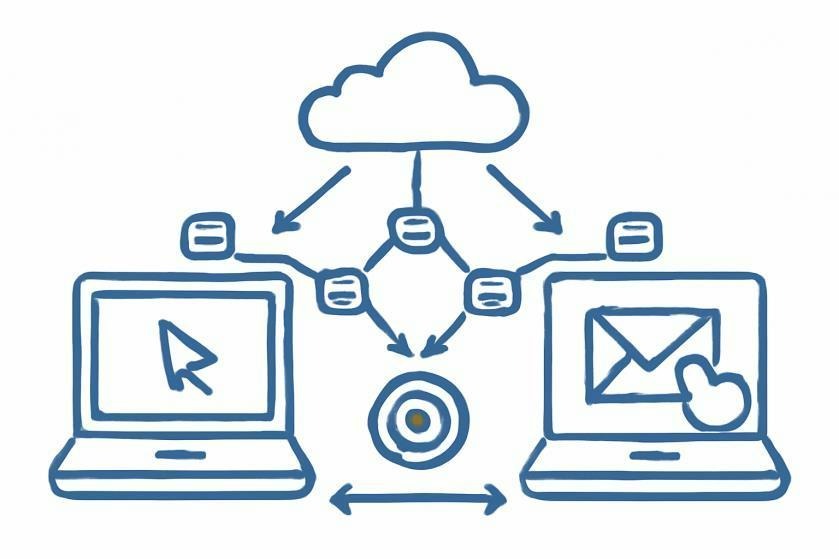
Example Protocols: IP, ICMP, IPsec, OSPF, BGP
Data Unit: Packet
Real-World Application: Accessing a global website through a chain of routers using IP routing.
Layer 4: Transport Layer
The Transport Layer ensures complete and accurate end-to-end delivery of data between applications. It breaks data into segments, handles error detection and correction, flow control, and chooses between TCP (reliable) or UDP (fast, no guarantee).

Example Protocols: TCP, UDP
Data Unit: Segment
Real-World Application: Loading a web page using TCP or watching a live stream using UDP.
Layer 5: Session Layer
The Session Layer is responsible for managing and maintaining sessions between devices. It creates, maintains, and terminates communication sessions between endpoints, keeping track of the dialog and recovering interruptions if needed.
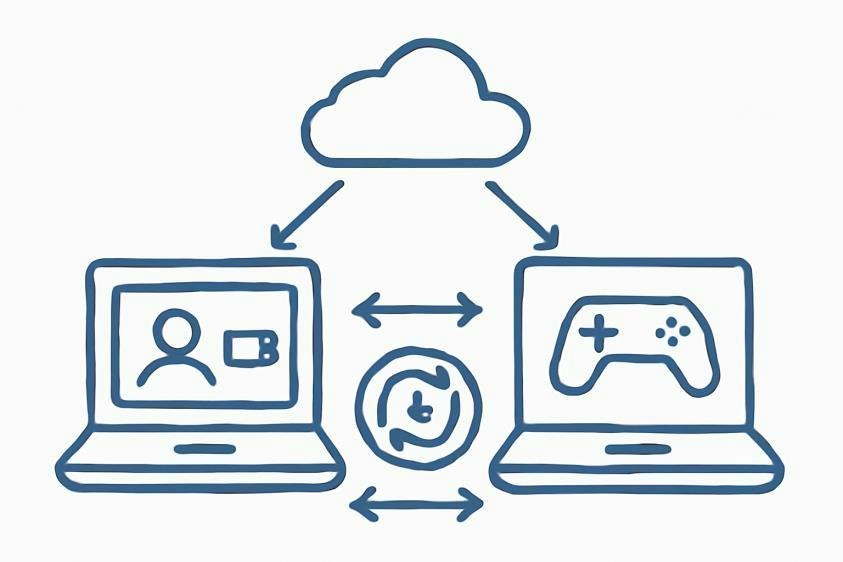
Example Protocols: RPC, NetBIOS, PPTP, SMB
Data Unit: Data
Real-World Application: Managing the live connection of a video call or multiplayer game session.
Layer 6: Presentation Layer
The Presentation Layer acts as a translator and formatter between the application and the network. It ensures that the data sent by the application layer of one system can be properly interpreted by the application layer of another.
It converts data into standard formats, encrypts/decrypts for security, and compresses/decompresses to optimize transmission.
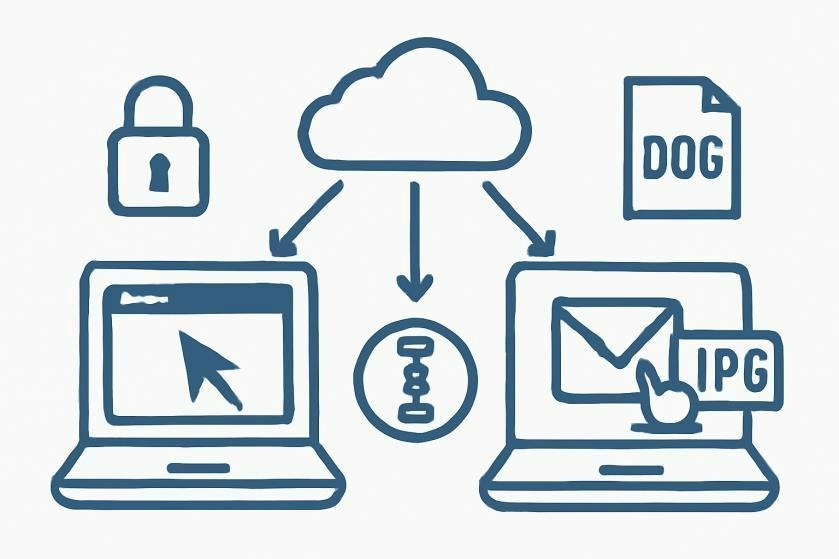
Example Protocols: TLS, SSL, JPEG, MPEG, ASCII, GIF
Data Unit: Data
Real-World Application: Viewing a secure, compressed video stream or opening an encrypted image file.
Layer 7: Application Layer
The Application Layer is the topmost layer of the OSI model. It acts as the interface between the user’s application (like a browser or email client) and the underlying network. This layer isn’t the app itself, but the part of the network stack that supports the app in communicating over the network.
It provides application-specific services meaning it prepares data for transmission and delivers received data to the app in a usable format. It either creates the data to be sent or interprets received data so the application can use it.
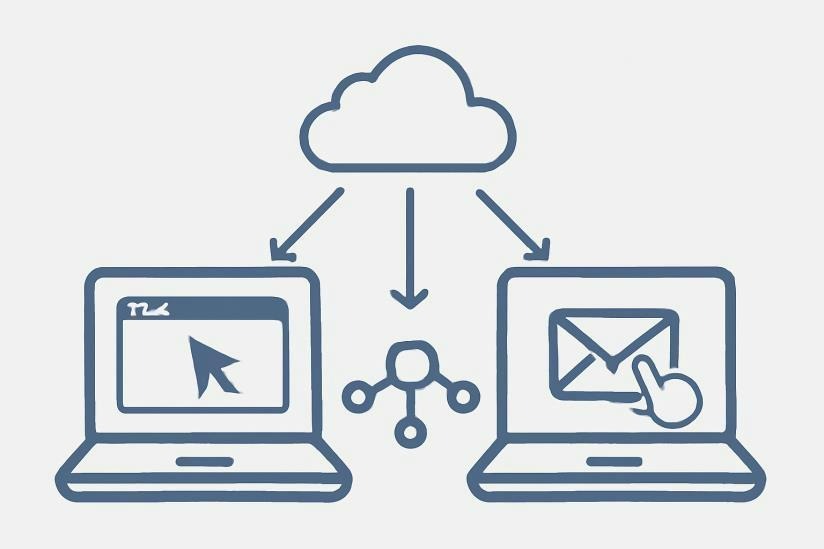
Example Protocols: HTTP, HTTPS, FTP, SMTP, DNS
Data Unit: Data
Real-World Application: Browsing a website or downloading a file over FTP.
Conclusion
The OSI model gives us a structured way to understand how data travels from one device to another across applications, systems, and networks. Each of the seven layers plays a specific role, from the physical transmission of bits to the interpretation of complex data formats. By understanding what each layer does, which protocols it uses, and how it interacts with other layers, you gain the foundation needed to analyze, troubleshoot, or build any networked system.
We’ve now unpacked the model that defines how everything on the internet, from emails to video calls, moves. This isn’t just theory; it’s the framework behind every digital interaction you encounter.
See you soon in the next blog, where we’ll continue building on this foundation.

